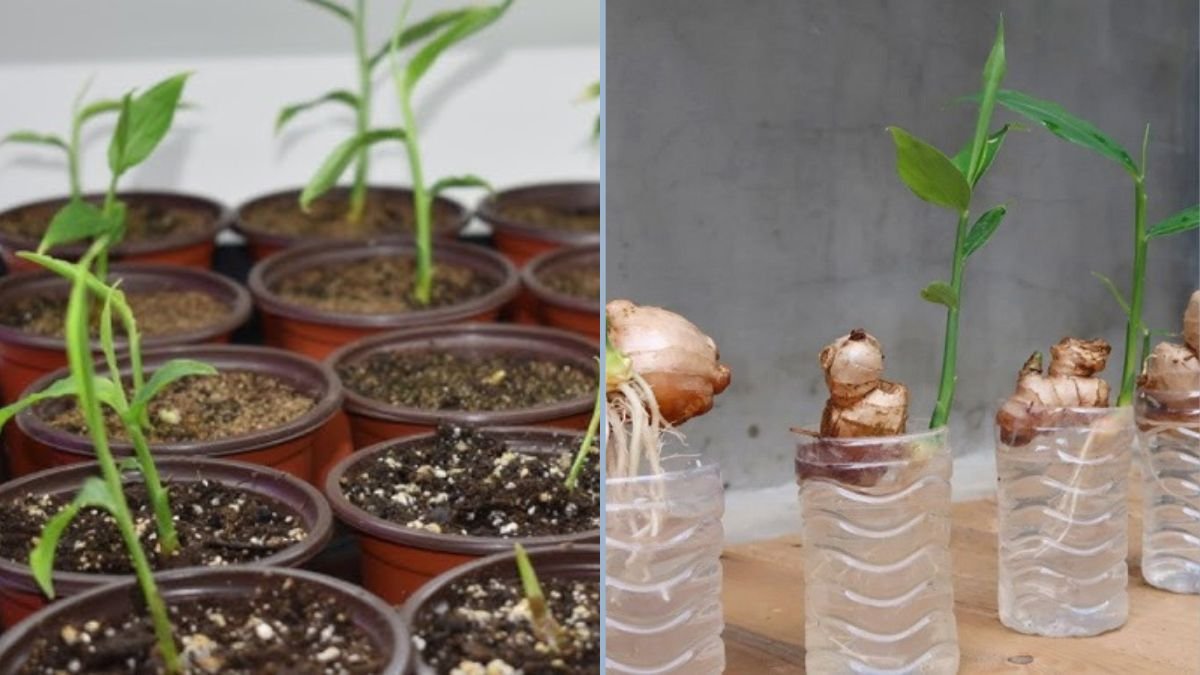Ginger is a beloved plant known not only for its aromatic flavor but also for its medicinal benefits. From spicing up meals to aiding digestion, ginger is a versatile and essential addition to any kitchen. Growing ginger at home can be both rewarding and cost-effective, but it requires understanding the right planting methods, soil mix, and container sizes.
In this post, we provide a 1-month update on growing ginger outdoors, including practical tips for planting seedlings, choosing the right pot size, preparing the perfect soil mix, and caring for your plants to ensure a healthy and productive crop. Whether you’re a beginner gardener or an experienced grower, this guide will help you optimize your ginger-growing journey.
Why Grow Ginger at Home?
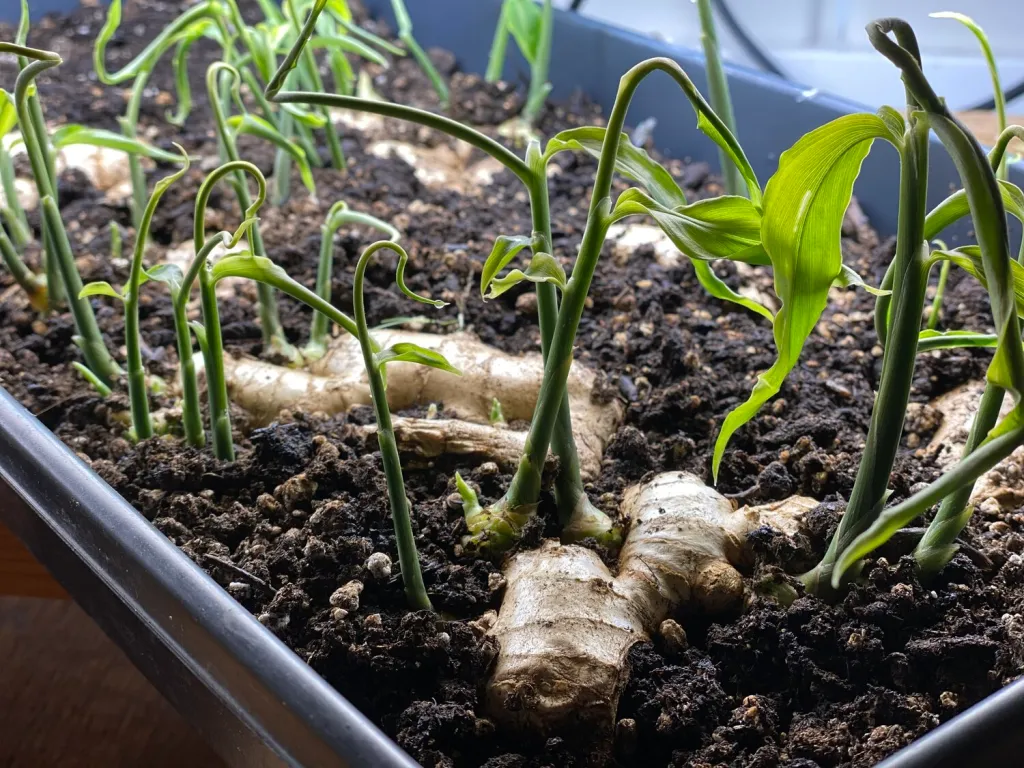
1. Cost Savings
Buying fresh ginger regularly from the market can be expensive. Growing your own allows you to have a constant supply at a fraction of the cost.
2. Freshness and Flavor
Homegrown ginger is fresher and more flavorful than store-bought varieties. You control how it is grown, ensuring chemical-free and organic produce.
3. Medicinal Benefits
Ginger contains compounds with anti-inflammatory and antioxidant properties. Homegrown ginger ensures you have a supply for teas, cooking, and natural remedies.
4. Sustainable Gardening
Growing ginger at home reduces reliance on packaged products, lowers transportation-related carbon emissions, and encourages eco-friendly practices.
5. Space-Efficient
Ginger can thrive in pots, making it ideal for balconies, patios, and small gardens.
Understanding Ginger Growth
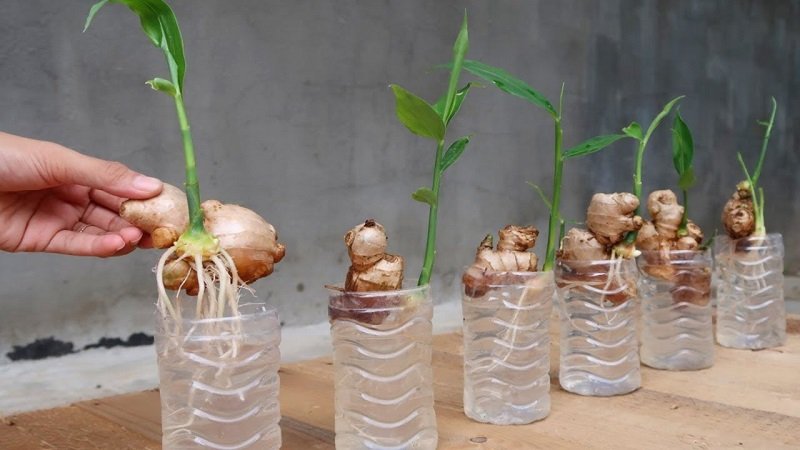
Before planting, it’s essential to understand the growth pattern of ginger:
- Tropical Rhizome Plant: Ginger grows from rhizomes, which are underground stems.
- Warm and Humid Conditions: Ideal temperature ranges from 70–85°F (21–29°C).
- Light Requirements: Prefers partial to filtered sunlight; too much direct sun can scorch the leaves.
- Soil Needs: Well-draining, fertile, and slightly acidic to neutral soil promotes healthy growth.
- Growth Duration: Ginger typically takes 8–10 months to mature, but leaves can be harvested earlier.
By understanding these requirements, you can create the ideal environment for your ginger to thrive.
Materials Needed
To grow ginger successfully outdoors, you will need:
- Ginger seedlings or rhizomes – Healthy, plump pieces with visible buds
- Pots or containers – Wide and shallow pots, 12–18 inches deep and wide, or larger for better yield
- Soil mix – A combination of garden soil, compost, and sand for aeration and drainage
- Fertilizer – Balanced NPK fertilizer or organic compost
- Watering can – For regular irrigation
- Mulch – Straw, dried leaves, or coconut husk for moisture retention
Step-by-Step Guide to Planting Ginger
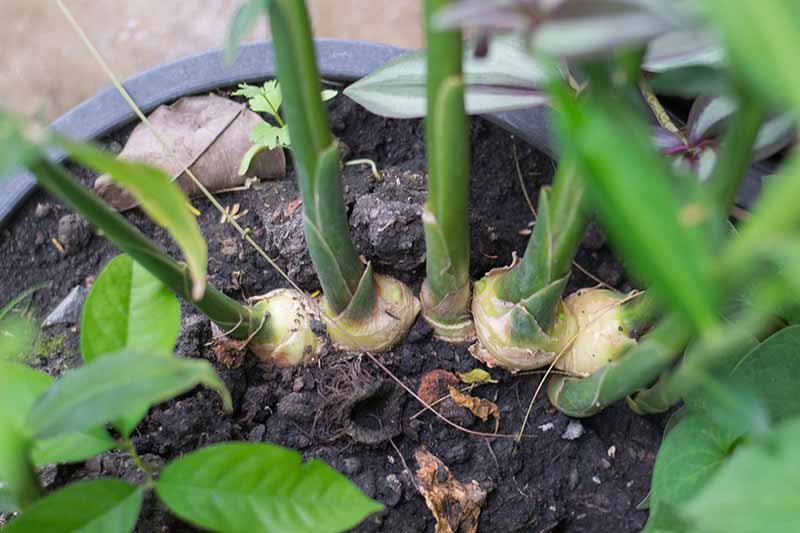
Step 1: Choosing the Right Container
Ginger roots grow horizontally, so choose wide and shallow pots.
- Minimum pot depth: 12 inches
- Width: 12–18 inches or more for multiple rhizomes
- Ensure drainage holes to prevent waterlogging
Wide pots allow rhizomes to expand and produce larger, more robust ginger.
Step 2: Prepare the Soil Mix
Ginger requires well-draining, fertile soil. An ideal mix includes:
- 50% garden soil
- 30% compost or well-rotted manure
- 20% coarse sand or perlite for aeration
Mix thoroughly and fill the pot, leaving 2–3 inches from the top for watering. This mix ensures the rhizomes receive nutrients, moisture, and oxygen.
Step 3: Planting Ginger Seedlings
- Place ginger rhizomes horizontally in the soil with buds facing upwards.
- Cover with 1–2 inches of soil, ensuring the buds remain slightly visible.
- Space multiple rhizomes 6–8 inches apart to prevent overcrowding.
- Water gently after planting to settle the soil.
Planting buds upwards encourages strong shoots and optimal growth.
Step 4: Positioning the Pots Outdoors
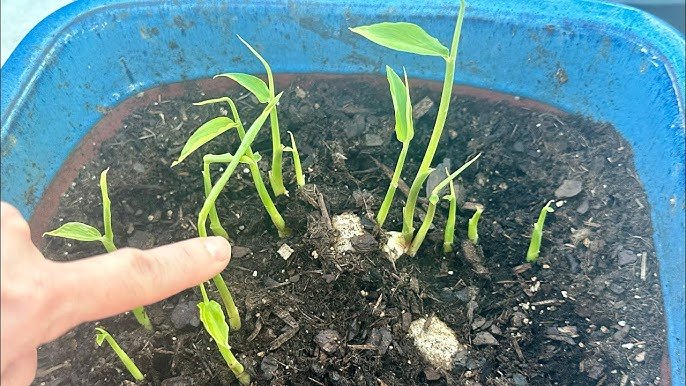
- Place pots in a location with partial sunlight or filtered light.
- Protect plants from strong winds and extreme heat.
- Rotate pots occasionally for uniform light exposure.
Ginger grows best in warm, humid conditions, so an outdoor patio or garden with indirect sunlight is ideal.
Watering and Care
- Frequency: Keep the soil consistently moist but not soggy. Overwatering can cause rhizome rot.
- Mulching: Cover soil with straw or dried leaves to maintain moisture and regulate temperature.
- Fertilization: Apply balanced fertilizer every 4–6 weeks or enrich soil with organic compost.
Proper watering and care during the first month are critical for establishing strong roots and healthy shoots.
One-Month Ginger Update
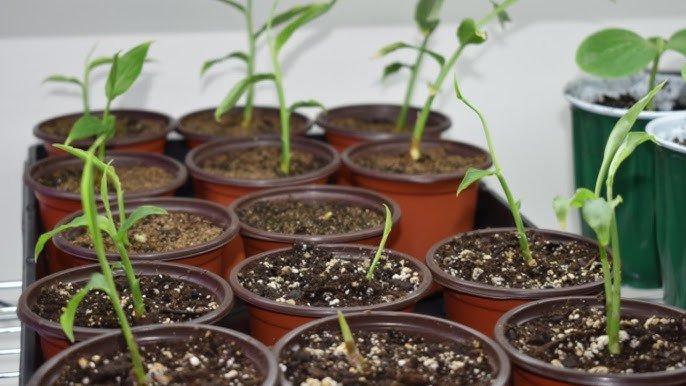
At one month after planting:
- Shoots: You should see healthy green shoots emerging from the buds.
- Leaf Growth: Leaves are starting to unfurl, indicating active growth.
- Soil Moisture: Ensure soil remains moist but well-draining.
- Container Check: Verify drainage holes are functioning properly.
Regular monitoring during this stage sets the foundation for robust ginger rhizome development.
Common Problems and Solutions
1. Yellowing Leaves
- Cause: Overwatering or nutrient deficiency
- Solution: Reduce watering and apply a balanced fertilizer
2. Poor Growth
- Cause: Inadequate sunlight or poor soil mix
- Solution: Move pots to partially sunny location and enrich soil with compost
3. Pests
- Aphids, mites, or root rot can occur
- Solution: Use neem oil for pests and ensure proper drainage to prevent root diseases
Tips for Maximizing Ginger Yield
- Choose Healthy Rhizomes: Plump, firm rhizomes with visible buds grow faster and produce more.
- Use Wide Pots: Horizontal growth encourages larger rhizomes.
- Maintain Moisture: Ginger prefers evenly moist soil throughout growth.
- Fertilize Regularly: Organic compost or balanced fertilizer enhances yield.
- Harvest Leaves Early: Young leaves can be harvested for culinary use without affecting rhizome growth.
Following these tips ensures a healthy, productive ginger crop.
Culinary and Medicinal Uses
- Cooking: Fresh ginger adds flavor to soups, stir-fries, sauces, and marinades.
- Tea: Ginger tea soothes digestion, reduces inflammation, and boosts immunity.
- Health Remedies: Ginger can help with nausea, colds, and joint pain.
- Preservation: Fresh rhizomes can be frozen or pickled for long-term use.
Having homegrown ginger ensures a continuous supply of this versatile and healthy ingredient.
Conclusion
Growing ginger outdoors in pots is a rewarding and practical gardening endeavor. A 1-month update shows that with proper care, ginger seedlings quickly establish themselves, producing healthy shoots and laying the foundation for robust rhizomes.
By following the right techniques for container size, soil mix, watering, and fertilization, you can enjoy fresh, chemical-free ginger at home. This method is perfect for urban gardeners, balcony growers, and anyone who wants a sustainable source of this aromatic and medicinal plant.
With patience, consistent care, and attention to soil and light conditions, your ginger plants will thrive over the coming months, providing a bountiful harvest of flavorful rhizomes that enhance both your kitchen and health.
Start your ginger-growing journey today and witness the transformation of a small seedling into a productive, thriving plant!
